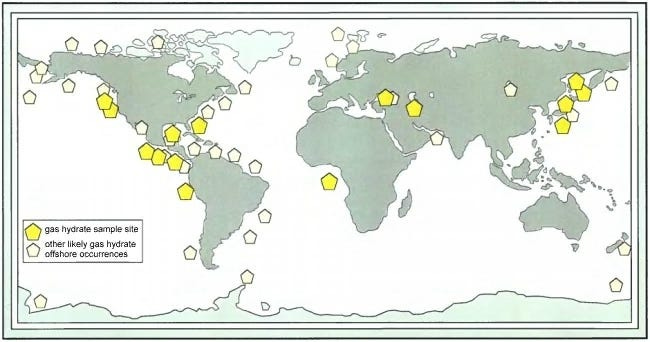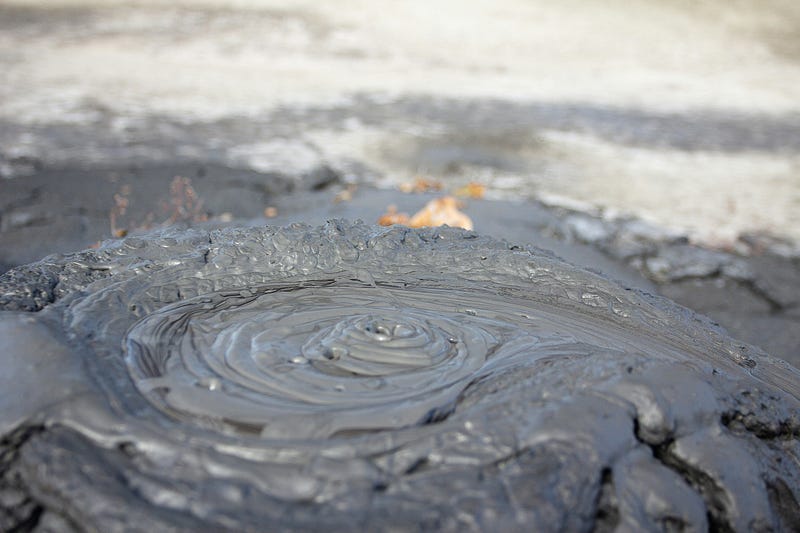In 2018, 2,508 mud volcanoes, spread over 42 different geographical areas, were recorded worldwide.
No, it’s not a clickbait title.
There really are volcanoes that erupt mud. But are they less dangerous?
Well… mud is certainly less dangerous than lava, but is it really without risk?
A Hidden Part Of Volcanology
Mud volcano temperatures can vary from close to 100°C (212°F) to an occasional 2°C (36°F).
The functioning of mud volcanoes follows a similar principle to that of conventional magmatic volcanoes, in the sense that both are fueled by accumulated pressure beneath the Earth’s surface.
However, as one might expect, mud volcanoes release materials that are cooler or warmer from the subsurface.
The temperature of the ejected material can vary, being either cold or hot, depending on the depth of its source beneath the surface.
The eruptive dynamics of these volcanoes are driven by underground pressure, which can intensify due to the accumulation of gases, such as methane, in buried reservoirs.
These gases can be generated biogenically, through the decomposition of organic matter, or thermogenically, through chemical reactions occurring at high temperatures and pressures within the Earth’s crust.
The substances expelled by a mud volcano include… mud — a mixture of clay and fine sediments — saltwater, various gases (mostly methane, as well as carbon dioxide and occasionally hydrogen sulfide), rock fragments, and, in some cases, hydrocarbons.
Yes, if hydrocarbons are present at these volcanoes, theoretically they could be naturally extracted. Well, if this were common, it would obviously be known, but the principle is possible!
But mud volcano eruptions eject only a small amount of hydrocarbons compared to other materials, such as water and mud.
So Where Are They?

Some mud volcanoes can reach heights of over 700 meters. However, most are much smaller.
Just like most magmatic volcanoes, mud volcanoes are mostly submarine. Due to their much lower intensity compared to their counterparts, it is much more difficult to detect their eruptions, and thus to catalog them.
They are primarily distributed along the coasts of North and South America.
However, the largest concentration of terrestrial mud volcanoes is found in Azerbaijan, with over half of the world’s active mud volcanoes located within its territory. The Absheron Peninsula, near Baku, the capital, is particularly notable.
Indonesia is also noteworthy in this regard, hosting the Lusi mud volcano on the island of East Java. The eruption of Lusi, which began in 2006, is considered one of the most significant recent mud eruptions.
As you can see in the videos, mud volcanoes are not necessarily very large in size, so it’s possible to encounter them in various locations on the Earth’s surface (and probably in our oceans as well).
Less Dangerous, But How Wary Should You Be?
At its peak, the Lusi mud volcano was ejecting around 180,000 cubic metres of mud a day.
So, I won’t teach you that mud volcanoes are less dangerous than magmatic volcanoes.
Nevertheless, it is crucial to be wary of them.
The most dangerous thing during a volcanic eruption isn’t the lava, it’s the gas.
And as explained earlier, for the mud to be as fluid and rise to the surface, it must have a high concentration of gas within it.
So naturally, during an eruption, significant amounts of gas (proportional to the size of the volcano) are released into the surroundings.
The largest volcanoes can also emit significant amounts of mud, leading to mudflows, which are the most devastating gravitational risk.
It should not be forgotten that, despite the small amount of hydrocarbon that can be erupted, it can come into contact with an ignition source and cause fires.
Besides the direct impact on humans, mud volcano eruptions can have adverse effects on the local environment, contaminating water sources, destroying natural habitats, and harming wildlife and flora.
Just because it’s a 100% natural event not influenced by humans doesn’t mean it can’t affect our way of life.
Despite these risks, it is important to note that most mud volcanoes do not pose a threat, but some can have serious consequences like the eruption of the Lusi mud volcano, which occurred on May 29, 2006, mentioned earlier.
Triggered near the city of Sidoarjo, this massive eruption was attributed to natural gas exploration, where drilling reportedly punctured a pocket of pressurized mud.
In the days that followed, Lusi released torrents of hot mud, engulfing several villages, displacing thousands of people, and causing enormous property damage.
At the peak of its activity, the volcano was ejecting about 180,000 cubic meters of mud per day, radically altering the local landscape.
More than 15 years after it began, the eruption continues, although its intensity has decreased.
Found this post through a share? Thank you for your curiosity! Don't hesitate to subscribe for free.
Final Words (For Quick Glancers)
Mud volcanoes, similar in eruptive mechanism to their magmatic counterparts, release cooler or warmer subsurface materials, including mud, saltwater, gases, and occasionally hydrocarbons. Driven by underground pressure, often intensified by methane gas accumulation, these volcanoes are mostly found submerged, with significant numbers on the coasts of North and South America and notably in Azerbaijan and Indonesia.
While not as hazardous as magmatic volcanoes, mud volcanoes’ gas emissions and potential mudflows pose risks. Notably, the 2006 Lusi eruption in Indonesia, triggered by drilling, resulted in significant environmental and property damage. Despite these dangers, most mud volcanoes don’t present a direct threat to humans, but their impact on the environment underscores the importance of cautious exploration and monitoring.
Thank you for taking the time to read my work! See you in another story.





